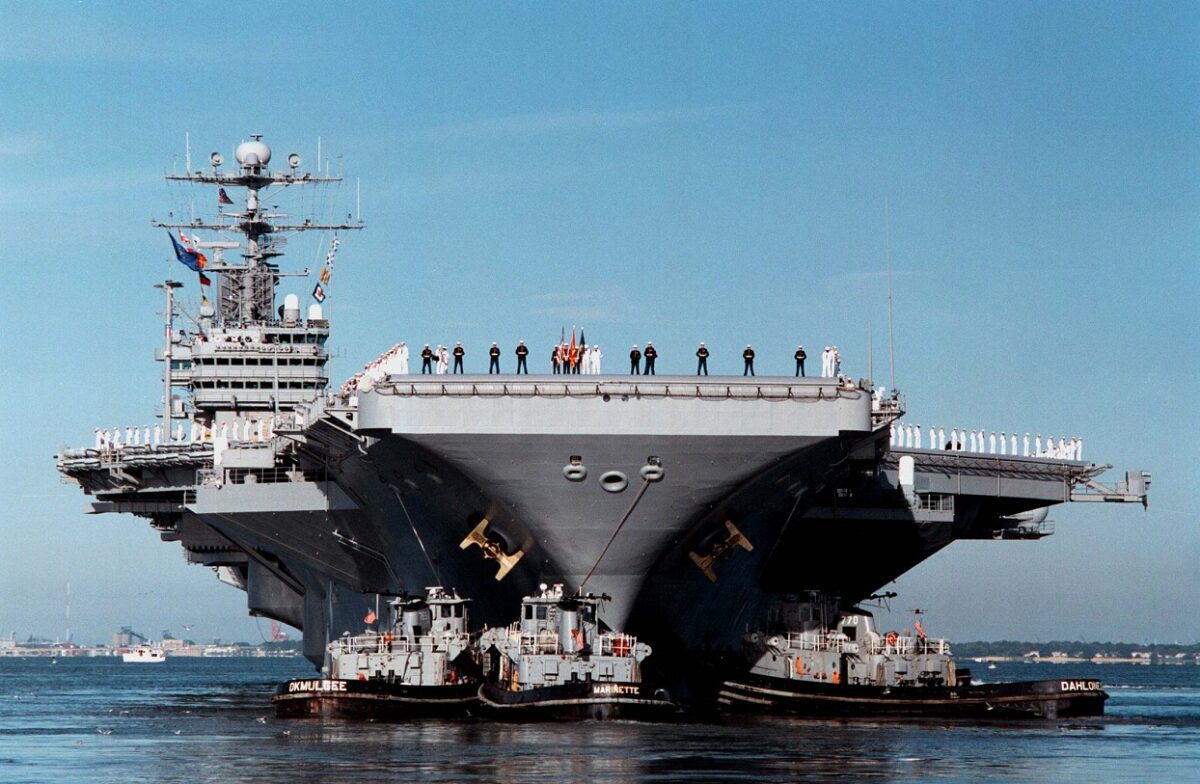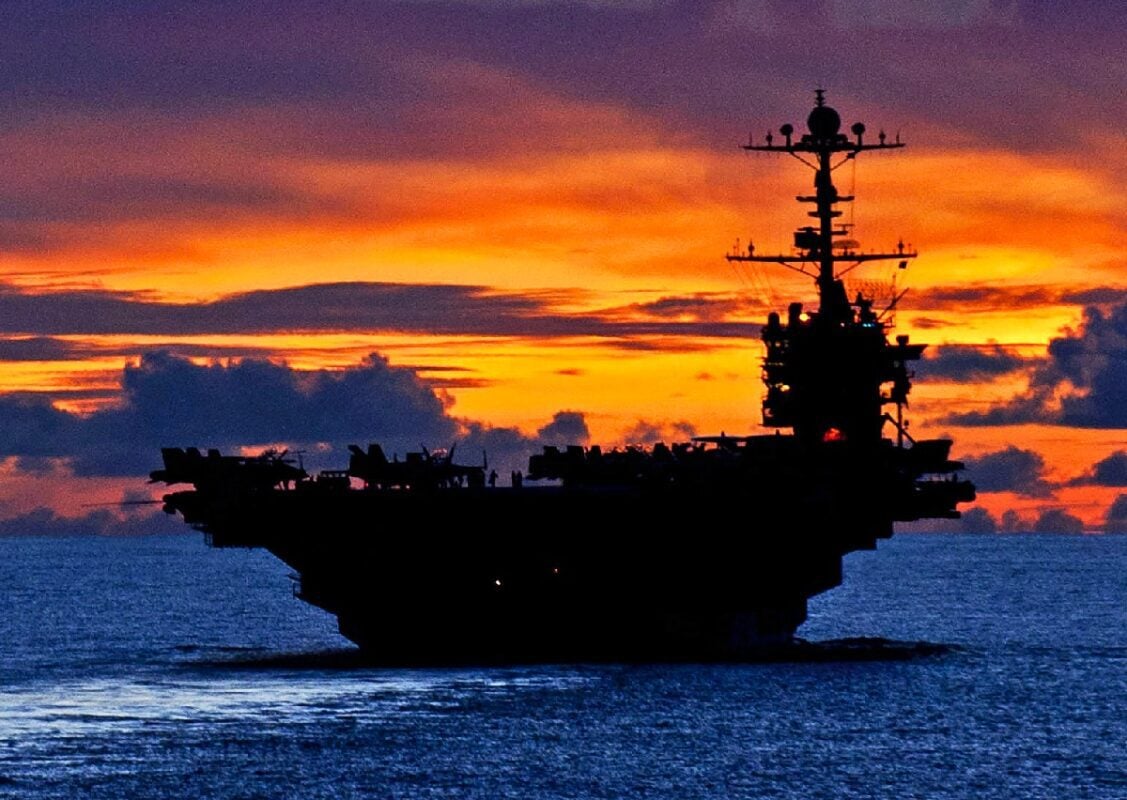Meet the USS George Washington – Despite the role that he played in American history, only four ships have been named in honor of George Washington, the hero of the Revolutionary War and the country’s first president. These have included a U.S. Navy frigate that saw served in the undeclared or “Quasi-War” with France; while the second was actually a German ocean liner that sought refuge in New York at the outbreak of the First World War, and which was taken over by the United States military and used as a troop transport.
The third was the lead vessel of a class of five nuclear-powered ballistic missile submarines that were built between 1958 and 1961 and served as the U.S. Navy’s main contribution to the nuclear deterrent force through the late 1980s.
However, it is the fourth vessel to bear the name that truly serves to honor General and later President George Washington – the sixth Nimitz-class nuclear-powered aircraft carrier. USS George Washington (CVN-73) was laid down in August 1986 and was officially commissioned into the United States Navy on July 4, 1992.
Lafayette, we are here!
It was fitting that it was from CVN-73 that then-President Bill Clinton and First Lady Hillary Clinton led an entourage of the nation’s leaders on June 5, 1994, to commemorate the 50th anniversary of the D-Day landings in Normandy, France. Off the coast of Normandy, President Clinton cast a wreath onto the waters of the English Channel in honor of men lost at sea during the landings.
Later that year, the Nimitz-class aircraft carrier, which could carry up to 90 aircraft, was dispatched to the Persian Gulf, where she took part in Operation Vigilant Warrior to protect Kuwait from a second invasion by Iraq. Joined by the amphibious assault ship USS Tripoli (LPH-10), along with 2,000 Marines of the 15th Marine Expeditionary Unit, the arrival of the carrier convinced Iraqi leader Saddam Hussein to withdraw his Republican Guard Forces. In November of 1994 Iraq officially recognized an independent Kuwait.
The carrier spent the remainder of the 1990s on deployments to the Mediterranean Sea and the Persian Gulf. Following the September 11 terrorist attacks on New York City and the Pentagon, USS George Washington, along with the carriers USS John F. Kennedy (CV-67) and USS John C. Stennis (CVN-74), was deployed to protect the United States from potential attacks. CVN-73 was stationed as a protector of New York City and the east coast.
During the subsequent sixth deployment, which began in February 2004, CVN-73 traveled to the Gulf of Aden and conducted operations in the Persian Gulf. In December 2005, it was announced by the United States Navy that USS George Washington would replace the conventional-powered USS Kitty Hawk (CV-63) as the forward-deployed carrier at the U.S. Yokosuka Naval Base in Japan. As a result, USS George Washington became the first nuclear-powered surface warship permanently stationed outside the continental United States.
USS George Washington was later one of several U.S. Navy vessels that also participated in disaster relief after the 2011 Tōhoku earthquake and tsunami. The flattop departed Japan in 2015 following a 10-day turnover period with the newer USS Ronald Reagan (CVN-76). Prior to beginning her mid-life RCOH, George Washington also provided support to Haiti following October 2016’s Hurricane Matthew.
Overhaul Underway
USS George Washington is currently undergoing her four-year mid-life Refueling and Complex Overhaul (RCOH), which will ensure she’ll be able to operate for another quarter-century. In addition to the refueling of the nuclear reactors, the ship’s combat systems and other warfighting capabilities are being upgraded – so that George Washington will leave the shipyard as one of the most technologically-advanced capital warships in the world.

Sailors and Marines man the rail as three harbor tugs push the aircraft carrier USS George Washington (CVN 73) away from Pier 11 at Norfolk Naval Base on Oct. 3, 1997, for a scheduled six-month deployment. The George Washington will relieve the USS John F. Kennedy (CV 67) to conduct operations in the Mediterranean Sea. DoD photo by Petty Officer 2nd Class Christopher Vickers, U.S. Navy.

120908-N-TX154-095 PACIFIC OCEAN (Sept. 08, 2012) The forward deployed aircraft carrier USS George Washington (CVN 73) sails through calm seas near Guam at sunset. George Washington is the centerpiece of Carrier Strike Group FIVE, the US Navy’s only continuously forward deployed carrier strike group, based out of Yokosuka, Japan. Carrier Strike Group FIVE is currently on a routine Western Pacific patrol. (U.S. Navy photo by Mass Communication Specialist 3rd Class Paul Kelly/ Released)
Once she returns to service, USS George Washington will also likely operate the carrier variant of the Lockheed Martin F-35 Joint Strike Fighter aircraft, making the Nimitz-class carrier an even more formidable warship in the U.S. Navy’s fleet.
Now a Senior Editor for 1945, Peter Suciu is a Michigan-based writer who has contributed to more than four dozen magazines, newspapers and websites. He regularly writes about military hardware, firearms history, cybersecurity and international affairs. Peter is also a Contributing Writer for Forbes.

